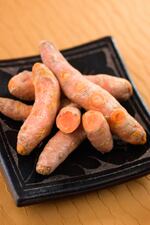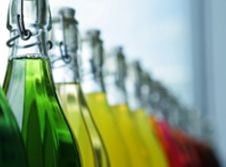As part of our probe into clean label ahead of our June 26 Natural & Clean Label Trends 2013 online event, Elaine Watson caught up with SVP Colors Kurt Seagrist (KS) and senior director, applications and product development Byron Madkins (BM) to find out what's happening in the world of natural colors.
Will natural colors ever be as cheap as synthetics?
We’ve seen a significant expansion of supply in certain growing regions and the price premium for certain natural colors is now considerably less than it used to be. However, I don’t think they will come to parity with synthetics (KS).
It all comes down to cost in use and we can help customers formulate in ways to reduce dosage rate, which can be anything 10ppm to 300ppm depending on the application (BM).
Where is the innovation in the natural colors space?
Because it takes so long to get new colors through the regulatory approvals process, the focus of innovation efforts in the industry are on two areas: Looking at ways to get natural color pigments in the most efficient way from the source, and looking at ways to get them to perform better in different applications (BM).
There are petitions in process to get new natural colors approved in different regions, but it can take anything from two to 10 years depending on the region and the data available (BM).
Do natural colors now perform as well as artificial counterparts, or is there still a way to go?

I don’t think you can say that natural colors can perform as well as synthetic colors in every way, but there have been huge technological advances, and while 10 years ago the gap between them was still extremely wide, in certain applications now, it’s closed completely (KS).
One of the big changes has been improving the stability of some natural colors with microencapsulation technologies. Some of the old turmeric formulations where you emulsify it [the pigment] to make it water miscible didn’t have great light stability, for example. But if you microencapsulate it, products that would have lost their color in a matter of days can now keep their color for a year or more (BM).
We’ve also learned a lot about blending different fruit and vegetable juice sources, as a blend can be more stable (BM).
As regards pH, lower pH is great for natural colors, especially anthocyanins, which have excellent acid stability. But once you go over pH5, using anthocyanins can be a challenge, but there are other options available such as carmine that have good stability across a wider pH range (BM).
Some people did look for alternatives [after carmine prices rocketed in 2010 and some consumers balked at the thought of eating crushed cochineal insects], but prices have now come down again and a lot of people in the industry using carmine have stuck to their guns and carried on with it (KS).
How does the GMO issue impact the natural colors market?
Generally the pigments themselves are not from genetically modified sources, but emulsifiers and oils [from soy and corn] can be an issue, although it’s easy enough to source non-GMO versions if customers ask for them (BM).
Are certain colors still hard to find, naturally?

I’d say the lack of a natural blue is the biggest or most visible deficiency in the natural color landscape. It sounds almost humorous if you think about it - after all, how important is blue food? But you need blue to make greens and purples, so it’s not just about making blue candy (BM).
There is a petition to get spirulina on the FDA list of exempt color additives, but it’s not been approved yet, and gardenia blue is also not yet approved for use in the US. As for green, in the US, chlorophyll [sodium copper chlorophyllin] is only approved for certain applications [citrus-based dry beverage mixes] (BM).
What kind of demand is CHR Hansen seeing for natural colors?
We’re seeing the strongest growth in Europe and in emerging and developing markets, but there is continued steady demand in North America as firms continue to clean up labels, particularly in children’s products.
Stay up to date with the latest trends in natural and clean label at Natural & Clean Label Trends 2013, a FREE-to-attend online event run by FoodNavigator.com and FoodNavigator-USA.com on June 26.
For full details and to register, click here.
